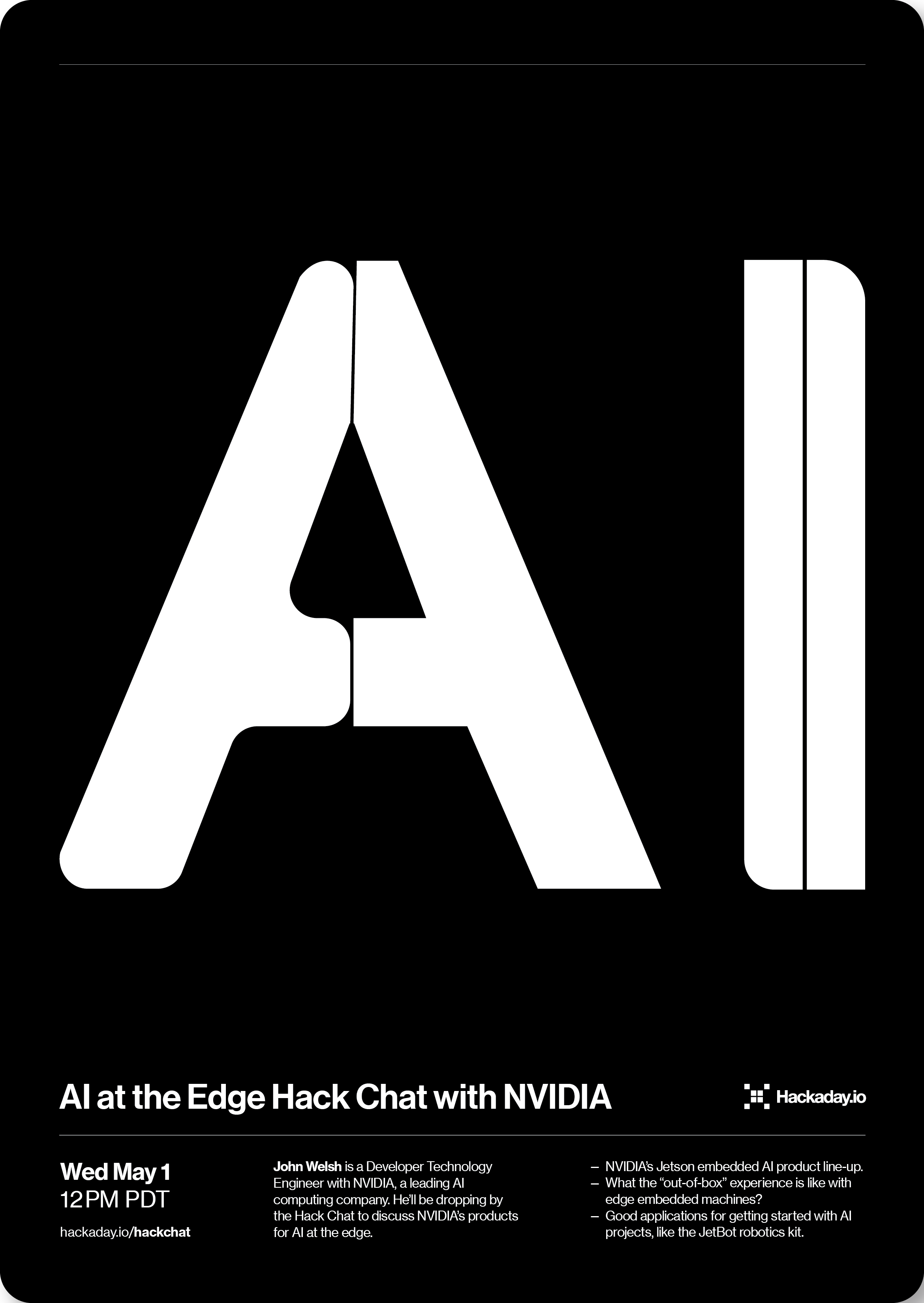John Welsh from NVIDIA will host the Hack Chat on Wednesday, May 1, 2019 at noon PDT.
Time zones got you down? Here's a handy time converter!
 Machine learning was once the business of big iron like IBM's Watson or the nearly limitless computing power of the cloud. But the power in AI is moving away from data centers to the edge, where IoT devices are doing things once unheard of. Embedded systems capable of running modern AI workloads are now cheap enough for almost any hacker to afford, opening the door to applications and capabilities that were once only science fiction dreams.
Machine learning was once the business of big iron like IBM's Watson or the nearly limitless computing power of the cloud. But the power in AI is moving away from data centers to the edge, where IoT devices are doing things once unheard of. Embedded systems capable of running modern AI workloads are now cheap enough for almost any hacker to afford, opening the door to applications and capabilities that were once only science fiction dreams.
John Welsh is a Developer Technology Engineer with NVIDIA, a leading company in the Edge computing space. He'll be dropping by the Hack Chat to discuss NVIDIA's Edge offerings, like the Jetson Nano we recently reviewed. Join us as we discuss:
- NVIDIA’s complete Jetson embedded AI product line-ups;
- What the "out-of-box" experience is like with edge embedded machines;
- Good applications for getting started with AI projects, like the JetBot robotics kit; and
- How is AI on the edge likely to grow going forward?












I like want to more about the american progressive life insurance and